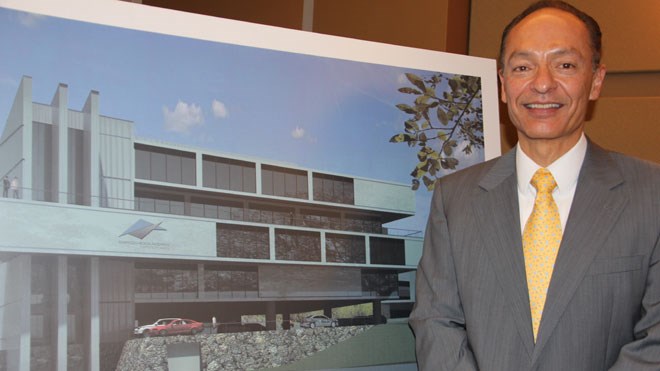Almost a year since it was founded, the Advanced Medical Research Institute of Canada (AMRIC) has looked for inspiration across Ontario to pave a unique path for health research in Sudbury.
Dr. Francisco Diaz-Mitoma, AMRIC's CEO, has grand plans for the new research centre, and hopes Sudbury can mimic what has been achieved in Thunder Bay with the Thunder Bay Regional Research Institute.
“We can have similar success,” Diaz-Mitoma said.
Thunder Bay's health research institute was incorporated in 2007.
The city attracted more than $50 million in startup funding to launch the institute, and has since attracted a steady stream of grant funding for its various research projects.
In Thunder Bay, there has been a strong focus on the commercialization of new medical devices.
“The idea is to take our scientists' research and to translate it into devices that will have an economic impact, but also a health impact,” said Dr. Roxanne Deslauriers, the Thunder Bay Regional Research Institute's CEO.
The first medical device out of Thunder Bay to make it past the initial research stage has been the X-ray light valve, a component to make mammography more cost-effective.
Researchers created a new company, XLV Diagnostics, that is now perfecting the X-ray light valve and preparing it for the commercial market.
“We anticipate we'll begin distributing this machine in 2015,” said Sorin Marcovici, CEO of XLV Diagnostics.
AMRIC has taken a similar approach to research and eventual commercialization. In July, it announced a partnership with a European software company called Elekta to improve a program that helps schedule and treat cancer patients.
The partnership created six jobs, and Diaz-Mitoma said it has the potential to create another six jobs.
AMRIC researchers have also partnered with not-for-profit organizations, such as the Bill and Melinda Gates Foundation, to develop a nicotine vaccine.
So far, AMRIC has secured $3.7 million in grants for research and created 60 jobs at Health Sciences North.
“AMRIC’s top priority is to explore real solutions to the most pressing health concerns in the north such as cancer, heart disease, obesity and seniors care,” said Dr. Dennis Roy, president and CEO of Health Sciences North, in a recent column. “This investment in research is already providing more avenues of care for our patients than ever before.”
But a year into its existence, AMRIC has faced some early roadblocks.
Its research hub currently occupies 12,000 square feet of space on the second level of the Northeast Cancer Centre in Sudbury.
Diaz-Mitoma said he wants to expand the research space to 75,000 square feet with other facilities.
“Right now we can not do any hiring,” he said, due to limited space.
The first stage of Diaz-Mitoma's plan would be to convert the former St. Theresa's School on Walford Road into 20,000 square feet of research space.
He has asked for all three levels of government to fund the $15.5-million project. The City of Greater Sudbury would contribute $2 million.
But Sudbury Mayor Marianne Matichuk has said AMRIC should turn to large pharmaceutical companies to fund the expansion.
“I don't think we can afford this,” said Ward 3 Coun. Claude Berthiaume on Nov. 19.
But Diaz-Mitoma said he was confident he could convince Sudbury's council to write AMRIC a cheque for the renovation.
“I'm sure that at the end of the day they will do a great job on deciding what's best for Sudbury,” he said. “The city's investment will be a catalyst for the other funders to come in and make this plans happen.”
If Diaz-Mitoma can secure funding to renovate the school into a new research facility, he wants to turn his sights to a new stand-alone building that would have around 53,000 square feet of research space.
“We need the new space if we want to continue with the rate we have,” he said.
